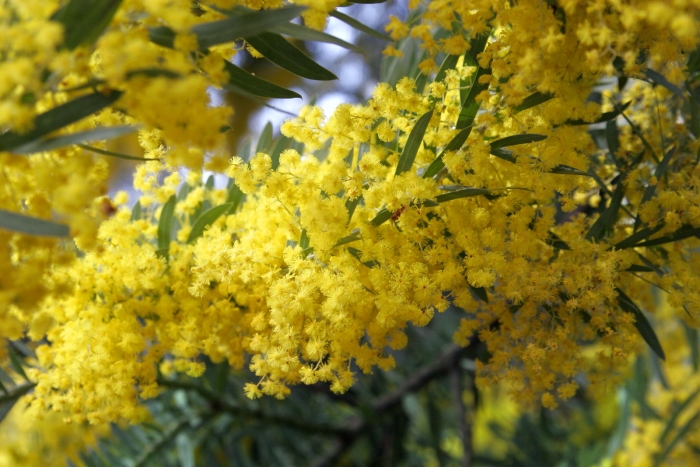Blue Bush
(Acacia covenyi)
Blue Bush (Acacia covenyi)
/
/

Fir0002
GFDL 1.2
Image By:
Fir0002
Recorded By:
Copyright:
GFDL 1.2
Copyright Notice:
Photo by: Fir0002 | License Type: GFDL 1.2 | License URL: http://www.gnu.org/licenses/old-licenses/fdl-1.2.html | Uploader: Fir0002 | Publisher: Wikimedia Commons | Title: Acacia_covenyi02.jpg | Notes: |







Estimated Native Range
Summary
Acacia covenyi, commonly known as Blue Bush, is an evergreen shrub native to the tablelands and slopes of the Great Dividing Range in New South Wales, Australia. It typically grows to a height of 6-20 feet (1.8-6.1 meters) and a width of 10-20 feet (3-6.1 meters). The plant’s natural habitat includes dry sclerophyll forests and woodlands, often on hillsides and ridges where it is adapted to the well-drained soils. Blue Bush is characterized by its striking glaucous blue-green foliage and vibrant yellow rod-shaped flowers that bloom in the spring. The flowers are moderately showy and attract pollinators such as bees.
Blue Bush is valued for its drought tolerance and unique foliage color, making it an excellent choice for water-wise gardens, xeriscaping, and as an ornamental feature in rockeries and native plantings. It is also used for habitat restoration projects. This Acacia prefers full sun exposure and thrives in soils with fast drainage, requiring minimal water once established. While generally low-maintenance, it can be susceptible to root rot if overwatered or planted in poorly drained soils. There are no widely recognized cultivars of this species in the horticultural trade, but its natural form is well-regarded for its aesthetic appeal.CC BY-SA 4.0
Blue Bush is valued for its drought tolerance and unique foliage color, making it an excellent choice for water-wise gardens, xeriscaping, and as an ornamental feature in rockeries and native plantings. It is also used for habitat restoration projects. This Acacia prefers full sun exposure and thrives in soils with fast drainage, requiring minimal water once established. While generally low-maintenance, it can be susceptible to root rot if overwatered or planted in poorly drained soils. There are no widely recognized cultivars of this species in the horticultural trade, but its natural form is well-regarded for its aesthetic appeal.CC BY-SA 4.0
Plant Description
- Plant Type: Shrub
- Height: 6-20 feet
- Width: 10-20 feet
- Growth Rate: Rapid
- Flower Color: Yellow
- Flowering Season: Spring
- Leaf Retention: Evergreen
Growth Requirements
- Sun: Full Sun
- Water: Low
- Drainage: Fast
Common Uses
Bee Garden, Bird Garden, Drought Tolerant, Hedges, Hummingbird Garden, Low Maintenance, Showy Flowers, Street Planting
Natural Habitat
Dry sclerophyll forests and woodlands, often on hillsides and ridges of the Great Dividing Range in New South Wales
Other Names
Common Names:
Scientific Names: , Acacia covenyi, Racosperma covenyi,
GBIF Accepted Name: Acacia covenyi Tindale